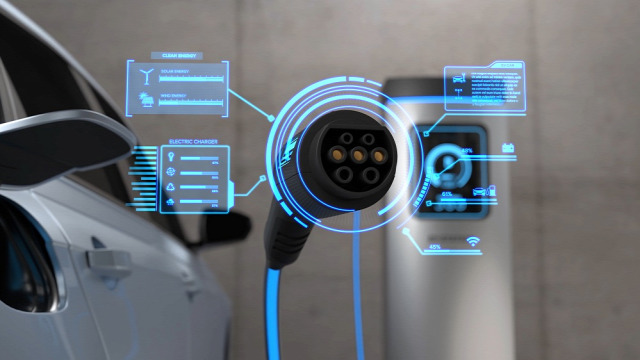
The transition to electric vehicles (EVs) represents a significant shift in the automotive industry, driven by the need to reduce carbon emissions and dependence on fossil fuels. As EV adoption continues to surge worldwide, the demand for efficient and convenient charging infrastructure becomes paramount. Fast-charging systems play a pivotal role in enabling EV drivers to recharge their vehicles quickly, thereby addressing range anxiety and facilitating widespread EV adoption.
The EV fast-charging system market was valued at $8.39 billion in 2023 and is expected to reach $33.15 billion by 2033, with a CAGR of 14.73% from 2023 to 2033. Electric vehicle fast-charging systems are designed to deliver high-power charging capabilities, significantly reducing the time required to recharge EV batteries. These systems typically utilize direct current (DC) chargers and high-voltage power sources to provide rapid charging, allowing drivers to replenish their vehicle's battery in a matter of minutes rather than hours.
Electric Vehicle Fast-Charging System Market Dynamics and Growth Drivers:
Several factors are driving the growth of the electric vehicle fast-charging system market:
-
Increasing EV Adoption: With governments worldwide implementing stringent emission regulations and incentivizing EV adoption, the global fleet of electric vehicles is expanding rapidly. This surge in EV sales creates a growing demand for fast-charging infrastructure to support the charging needs of EV drivers, particularly in urban areas and along major transportation routes.
-
Advancements in Technology: Ongoing advancements in charging technology, battery chemistry, and power electronics are driving improvements in fast-charging systems. Innovations such as liquid-cooled cables, ultra-fast chargers, and vehicle-to-grid (V2G) capabilities enhance the efficiency, reliability, and versatility of fast-charging infrastructure, further accelerating market growth.
-
Infrastructure Investment: Governments, utilities, and private companies are investing heavily in the deployment of fast-charging infrastructure to support the widespread adoption of electric vehicles. Initiatives such as public-private partnerships, incentive programs, and infrastructure grants incentivize the expansion of fast-charging networks, fostering a more EV-friendly ecosystem.
-
Consumer Expectations: As consumers increasingly prioritize convenience and accessibility when choosing electric vehicles, the availability of fast-charging infrastructure becomes a key factor influencing purchasing decisions. Fast-charging stations located at convenient locations such as shopping centers, restaurants, and workplaces enhance the appeal of EVs by offering convenient charging options for drivers on the go.
-
Environmental Concerns: The imperative to combat climate change and reduce air pollution is driving the electrification of transportation. Fast-charging systems powered by renewable energy sources such as solar and wind contribute to decarbonizing the transportation sector, aligning with sustainability goals and environmental objectives.
Request A Free Detailed Sample on Electric Vehicle Fast-Charging System Market!
Market Segmentation:
Segmentation 1: by Application
Segmentation 2: by Connector Type
Segmentation 3: by Power Output
Segmentation 4: by Installation Type
Segmentation 5: by Region
Market Challenges and Opportunities:
Despite the rapid growth of the electric vehicle fast-charging system market, several challenges remain, including interoperability issues, grid integration constraints, and upfront infrastructure costs. Standardization efforts, interoperable charging protocols, and smart grid solutions are essential to address these challenges and ensure seamless integration of fast-charging infrastructure into the broader energy ecosystem.
Moreover, the transition to electric mobility presents opportunities for innovation and collaboration across industries. Partnerships between automakers, charging infrastructure providers, energy companies, and technology firms can drive the development of integrated solutions, innovative business models, and value-added services to enhance the EV charging experience and accelerate market growth.
Future Outlook:
The future of the electric vehicle fast-charging system market looks promising, with exponential growth expected in the coming years. As battery technology continues to improve, enabling faster charging rates and longer driving ranges, the demand for high-power fast-charging infrastructure will continue to rise. Furthermore, advancements in wireless charging technology, battery swapping solutions, and smart grid integration will further enhance the efficiency, convenience, and accessibility of EV charging infrastructure.
Access More: Get Detailed Insights in Electric Vehicle Market Reports
Conclusion:
Electric vehicle fast-charging systems are essential enablers of the transition to sustainable transportation, offering fast, convenient, and reliable charging solutions for EV drivers. As governments, industries, and consumers embrace electric mobility, the demand for high-power fast-charging infrastructure will continue to soar. By addressing challenges, fostering innovation, and investing in infrastructure, the electric vehicle fast-charging system market will play a pivotal role in shaping the future of transportation and driving the global transition towards a cleaner, greener future.





